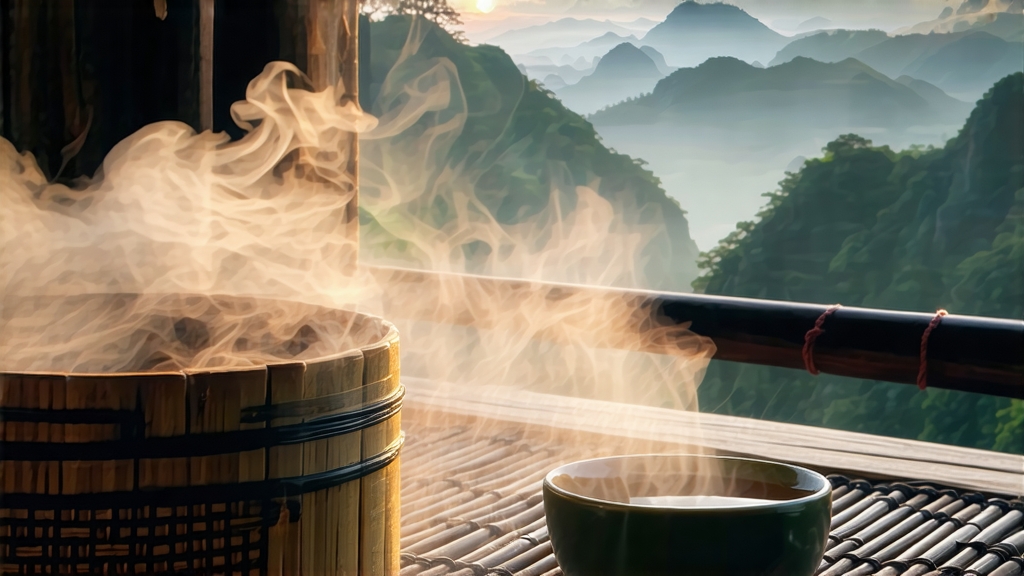
Tucked high on the mist-veiled slopes of Mt. Meng in Sichuan Province, Meng Ding Huang Ya—“the yellow bud from the summit of Meng”—occupies a singular throne in the pantheon of Chinese tea. While green tea commands global fame and pu-erh enjoys cult status, yellow tea remains the quiet aristocrat, its production secrets once guarded by imperial decree. Among the handful of authentic yellow teas still crafted today, Meng Ding Huang Ya is the oldest name recorded in Chinese literature (Tang dynasty, 8th c.) and the only one repeatedly listed as tribute across five consecutive dynasties. To understand it is to glimpse a vanished world where color, aroma and politics intertwined in every cup.
History: from elixir to etiquette
The first mention appears in the Chronicles of Meng Mountain, 724 CE: “The monks pick the single bud at cock-crow, steam it in bamboo, wrap it in silk; the liquor is the color of goose-down and pacifies the five internal tempests.” By Song times the tea had become currency for peace treaties; when Princess Wencheng left for Tibet in 641 CE she carried 200 cakes of “Meng bud” as dowry. Ming emperors so coveted the faint yellow tint—symbolizing the center of the universe—that they forbade commoners from drinking it; Qing bureaucrats measured their rank by how many grams they received at Spring Festival. When the last imperial order collapsed in 1911 the technique almost vanished: only three families on the mountain remembered the “sealed yellowing” step. A state-led restoration project in 1959 brought the tea back to market, yet annual production still hovers below 800 kg, making it rarer per ounce than silver.
Micro-terroir: where clouds polish the bud
Mt. Meng, at 1 450 m, rises through three climate belts in 12 km. The critical zone is the “cloud ring” between 1 000–1 300 m where humidity stays above 88 % year-round and UV-B is filtered by a 200-day fog. The soil is a loose shale-sand mix, pH 4.7, laced with selenium washed from Jurassic limestone. Only the local small-leaf landrace—Camellia sinensis var. mengdingensis—survives the 15 °C diurnal swing, developing a unique amino-acid ratio (theanine 4.3 %, arginine 2.1 %) that later enables the slow auto-oxidation known as men huang, literally “sealed yellowing.” Buds are plucked during the 13-day window when the mist lifts just after dawn and the leaf’s surface temperature is 12 °C, the exact point at which pectinase activity peaks.
Craft: the 72-hour breath
Meng Ding Huang Ya is not “green tea with a cold.” It undergoes a separate enzymatic phase that sits between green killing-green and white withering. The master recipe, orally transmitted in 48 rhyming lines, compresses into nine visible steps:
- Dawn pluck: one unopened bud, 15–20 mm, still turgid with overnight dew.
- Air-cool: spread on hemp cloth for 30 min so the stomata close, preventing edge-fermentation.
- Zhu-qing (“bamboo killing”): the buds are tumbled for 42 s in a 130 °C bamboo roaster shaped like a half-moon; the inner wall is lined with fresh tea leaves to buffer direct heat.
- Initial roll: 8 min at 38 N pressure; cell breakage kept under 28 % to avoid bitterness.
- Men huang: the pivotal act. The leaves are wrapped in two layers—yellow kraft paper inside, wet linen outside—forming a 2 kg pillow. This bundle rests inside a sealed bamboo box at 34 °C and 75 % RH for 48 h. Every 12 h the master opens the box, fluffs the leaves to re-oxygenate, then re-wraps. During this interval chlorophyll degrades to pheophytin, catechins dimerize into theaflavins, and a honey-like aroma precursor (DMNT) increases fivefold.
- Low-temp desiccation: 60 °C for 90 min to arrest oxidation while preserving 6 % residual moisture.
- Hand straightening: each bud is gently rubbed along a bamboo groove to achieve the signature